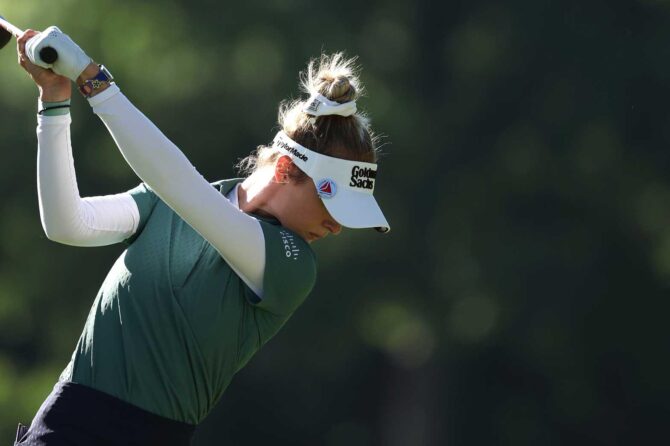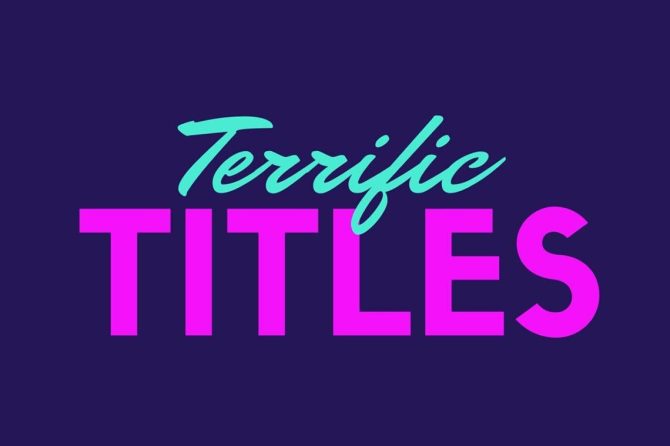The exploration of swing techniques in golf instruction offers valuable insights into the mechanics that define a successful game. Sergio Garcia, a prominent figure in the world of golf, exemplifies a refined approach to swing mechanics that incorporates a unique blend of grip, stance, and movement. His ability to convey complex concepts with clarity has made his instructional style notable among players of varying skill levels.
This analysis delves into the nuances of Garcia’s swing techniques, highlighting characteristics that contribute to his effectiveness as both a player and instructor. By examining his methodology, particularly in the areas of grip and stance, we can identify coaching strategies that not only enhance individual performance but also foster a thorough understanding of golf’s intricate dynamics. Furthermore, this assessment underscores the relevance of biomechanical principles in optimizing swing efficiency, thus providing a roadmap for players aiming to elevate their skill set. The following segments will dissect these elements, drawing on empirical observations and instructional practices to illuminate the impact of Sergio Garcia’s techniques on golf instruction today.
Analyzing the Fundamentals of Grip in Sergio Garcia’s Swing Techniques
In exploring sergio Garcia’s grip technique, it is indeed essential to acknowledge the evolution of his approach throughout his career. Originally, Garcia utilized an overlapping grip, a traditional choice among many professional golfers. However, after a wrist injury, he transitioned to an interlocking grip around 2010, which he later reverted back to the overlapping grip. This shift in grip style reflects the adaptability that is critical in professional golf, highlighting how a player’s physical condition can shape their technical choices.
Garcia’s grip fundamentals encompass several critical elements that contribute to effective swing mechanics, including:
- Pressure: Applying adequate pressure with both hands allows for better control of the clubface throughout the swing.
- Alignment: Ensuring that the grip is aligned with the forearms helps maintain a consistent path during the swing.
- Wrist Position: A neutral wrist position at address promotes optimal lag and timing, essential for maximizing distance and accuracy.
| Grip Type | Characteristics | Advantages |
|---|---|---|
| Overlapping | Traditional grip style,fingers overlapping | Promotes feel and control; preferred by many pros |
| Interlocking | Fingers interlock for a firmer grip | Provides stability for those with smaller hands |
Sergio Garcia’s emphasis on grip serves as an instructive element for aspiring golfers. By analyzing the nuances of his gripping technique, players can gain insights into how subtle variations can significantly affect their performance. Moreover, the grip forms the foundation upon which all subsequent swing mechanics are developed, illustrating the importance of a solid starting point in mastering the game.
assessing Stance Positioning and Its Impact on Performance
In evaluating the effectiveness of stance positioning in golf, sergio Garcia emphasizes the significance of proper alignment and posture as foundational elements in achieving optimal performance.A well-executed stance not only improves balance but also enhances the player’s ability to generate consistent power and accuracy. Key considerations include:
- Foot Placement: The width of the stance should generally match shoulder width, providing stability. This allows for a solid foundation from which to execute diffrent swings.
- Body Weight Distribution: Proper weight distribution across both feet is crucial. A balanced stance enables smoother transitions during the swing, reducing the risk of loss of control.
- alignment to Target Line: Positioning the body correctly in relation to the target enhances accuracy.Standing behind the ball to visualize the target line can significantly improve alignment.
Garcia’s approach incorporates adjustments in stance based on the specific club being used. As an example, shorter clubs such as wedges and mid-irons benefit from a more centered ball position within the stance, whereas longer clubs like drivers require the ball to be positioned further forward. The resulting variances in stance can lead to distinct impacts on swing mechanics and ball trajectory. Here is a summary of stance recommendations for various clubs:
| Club Type | ball Position | Stance Width |
|---|---|---|
| Driver | Forward in stance | Wider stance |
| Mid-Iron | Center of stance | Shoulder-width |
| short Iron/Wedge | Center of stance | Shoulder-width |
the impact of stance on performance cannot be overstated. Techniques applied by Sergio Garcia illustrate that even subtle adjustments in stance positioning can lead to notable improvements in swing mechanics. Golfers are encouraged to practice these principles to discover their optimal stance setup, which is essential for developing reliable swing patterns and achieving greater consistency on the course. continuous refinement and adaptation of stance in response to specific situations allow golfers to enhance their overall game.
Examining swing Mechanics for Consistency and Power
A thorough understanding of swing mechanics is crucial for golfers aiming to improve their consistency and power. In analyzing Sergio Garcia’s methodology, one can observe that he emphasizes the **importance of grip**. The grip serves as the golfer’s primary point of control over the club, influencing the trajectory and distance of shots. Garcia advocates for a neutral grip, which facilitates a natural wrist hinge during the backswing and allows for a smooth transition into the downswing. This technique minimizes the chances of mis-hits, ensuring that golfers maintain a centered clubface at impact.
Another critical aspect of Garcia’s approach is the **stance positioning**. He instructs players to adopt a balanced stance with feet shoulder-width apart, promoting stability throughout the swing. This position not only enhances balance but also optimizes the golfer’s weight transfer from the back foot to the front foot. In his coaching, Garcia frequently highlights the role of lower body involvement, which helps to generate rotational power. Properly engaging the hips and legs during the swing creates an excellent foundation for achieving maximum clubhead speed upon impact with the ball.
Lastly, Garcia’s swing mechanics illustrate the significance of **swing rhythm and timing**. He encourages golfers to develop a consistent tempo, as this affects both swing plane and follow-through.The correlation between rhythm and power is evident; a well-timed swing allows for improved energy transfer,resulting in longer shots. Practicing the transition between backswing and downswing at various speeds can aid players in discovering their optimal rhythm. By balancing power with control, golfers can enhance both distance and accuracy, ultimately leading to improved overall performance on the course.
Integrating Mental Strategies into Physical Training
Incorporating mental strategies into physical training can significantly enhance a golfer’s performance, as evidenced in sergio Garcia’s instructional techniques. Effective integration begins with establishing a strong mental framework that complements physical practice. For instance, Garcia emphasizes the importance of visualization in his lessons. By encouraging students to mentally rehearse their swing mechanics, he helps them internalize the movements, thereby increasing confidence and consistency on the course. This technique allows golfers to foresee their success and manage performance anxiety.
Moreover, a focus on mindfulness can yield significant benefits in training. Attention to the present moment during practice sessions fosters greater concentration and reduces the mental clutter that often accompanies competitive play. This is particularly crucial during the swing, where distractions can derail execution. Garcia addresses this by guiding learners through breathing exercises aimed at enhancing focus, enabling them to remain calm under pressure. Key benefits of these mental strategies include:
- Increased concentration – Enhancing focus on the shot at hand.
- Reduced anxiety – Managing nerves effectively during competition.
- Improved resilience – bouncing back from setbacks during play.
the symbiotic relationship between mental and physical training can be structured through a tailored practice regimen. By setting specific, measurable, attainable, relevant, and time-bound (SMART) goals, golfers can track both mental and physical progress. Accompanying these goals with feedback sessions that include both performance reviews and mental state evaluations ensures that the holistic development of the golfer is addressed. Below is a simple overview of SMART goals in golf training:
| Goal component | Description |
|---|---|
| specific | Define exactly what you want to achieve (e.g.,improving swing accuracy). |
| Measurable | identify how you will measure success (e.g., reducing missed putts by 20%). |
| Attainable | Ensure the goal is realistic while challenging (e.g., lowering handicap). |
| Relevant | Align goals with overall objectives in golf performance (e.g., competing in tournaments). |
| Time-bound | Set a timeline to achieve your goals (e.g., within the next three months). |
Recommendations for Coaches: Implementing Garcia’s Techniques in Practice Sessions
To effectively integrate Sergio Garcia’s instructional techniques into coaching practices, it is essential to focus on the **basic aspects** of grip, stance, and swing mechanics.Coaches should prioritize the following strategies:
- Customized Grip Techniques: Assess each golfer’s hand size and strength to tailor grip recommendations that maximize control over the club.
- Posture Adjustment: Encourage golfers to adopt a stable yet athletic stance, promoting balance and readiness for the swing.
- Consistency in Practice: Implement drills that reinforce these grip and stance fundamentals to foster muscle memory.
Moreover, understanding the biomechanics of swing execution is crucial. coaches should guide students to focus on the **kinetic link** between the upper body and lower body during the swing. This can be achieved through:
- Hip Rotation Drills: Use specific exercises that develop the coordination between hip movement and upper body motion, enhancing power transfer.
- Video Analysis: Incorporate technology to provide real-time feedback on swing mechanics, helping golfers visualize their progress.
- Progressive Complexity: Start with simple movements and gradually introduce more complex sequences to build confidence and competence.
fostering an habitat that champions **emotional confidence** is vital for player development. This can be achieved through:
- Positive Reinforcement: Regularly highlight improvements in students’ performances to build their self-esteem.
- Goal Setting: Work with golfers to set realistic and achievable performance goals, ensuring consistent motivation.
- mindfulness Practices: Advocate for techniques such as visualization and breathing exercises to help players maintain focus and composure.
the evaluation of Sergio Garcia’s swing techniques reveals a comprehensive framework that integrates key aspects of grip, stance, and swing mechanics essential for effective golf instruction. Garcia’s methodology not only emphasizes the importance of physical alignment but also fosters an understanding of the biomechanical principles that enhance performance while minimizing injury risk. By incorporating insights from his instructional techniques, coaches and players alike can cultivate skill development and elevate their overall game. As we further explore the nuances of golf instruction, the principles highlighted in Garcia’s approach serve as a guiding foundation for both novice and seasoned golfers seeking to optimize their performance on the course. Through ongoing practice and commitment to these techniques, players can aspire to achieve a refined and powerful swing, ultimately advancing their proficiency in the sport.





